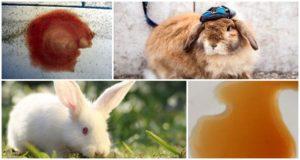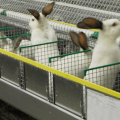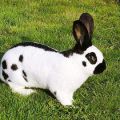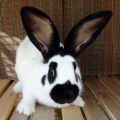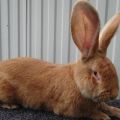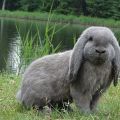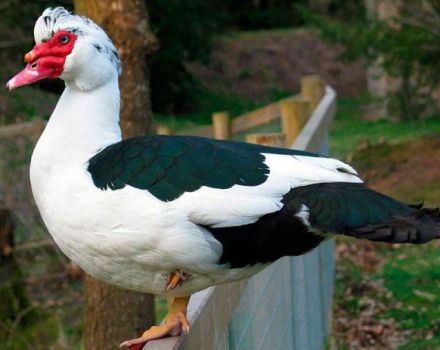A complete description of the breeds of giant rabbits, their breeding and rearing
Getting meat and soft skins is the main task of rabbit breeding. Therefore, farmers are of particular interest to rabbits called giants - animals that are heavy and have large skins. Animals are appreciated not only for their productivity, but also for their phlegmatic character. Among the giants are breeds for meat and downy meat purposes. Consider the popular breeds of large rabbits, the features of keeping and breeding animals.
general description
The main difference between the giant and its fellows is its impressive body size and weight. The average mass of giants is 5-6 kilograms, the largest specimens reach 10-12 kilograms. Breeders have purposefully created large breeds. The first species was bred in Flanders, information about the Flemish rabbit is found in documents from 1860. The full standard of the Flanders breed was formed in 1893, the giant was entered into the Register.
Now the list of giants has expanded. Representatives of breeds differ in appearance, color of wool, some are bred only for meat, others - for meat and fur.
Common features of giants are:
- strong, strong bones;
- long torso;
- fast weight gain;
- fertility (up to 8-10 per litter);
- resistance to low temperatures.
Some farmers believe that giants eat too much, but in terms of weight, this figure is within the average for regular rabbits.

What breeds can be attributed to giants
Some of the most popular and beloved giant rabbit breeds include:
- Gray giant. Bred by Ukrainian breeders, one of the best rabbit breeds for cold regions. The usual weight is 5 kilograms, often growing to 7. The usual color is gray, but other colors are now allowed. Possesses excellent health.
- White giant. The rabbit was bred in the USSR, belongs to the skin breeds. Elongated body, snow-white skin with dense, even fur. Fur takes paint well, millions of children have grown up in fur coats and hats made of rabbit fur. Albino with red eyes, the weight of the giant is 5.5 kilograms.
- German rizen. Weight - 8-10 kilograms, some individuals - 14 kilograms. The suits are varied - from white to black. Meat and fur look with high quality of both products.
- Flandre (Belgian giant). Real giants among fellows. Weight reaches a record 9-12 kilograms. This species is considered meat, the fur does not shine with a special quality.
- Soviet chinchillas. Large rabbits grow up to 8-9 kilograms. They have a beautiful silvery skin interspersed with white and black. The fur is of excellent quality, the meat is of an average category. Ripen at 4-5 months, females are fertile.
- Giant Angora.White fluffy wonder with fur up to 15 centimeters long. Rabbits weigh 5-6 kilograms. Such handsome men are cut every 3 months, receiving up to 200 grams of high-quality fluff. The content is complex, the fur requires special care so that it does not fall off.
- French ram. The name was given for the shape of the skull, similar to that of a sheep. The skin, pleasant to the touch, and the lop-earedness give the rabbits a cute look. They are often used as pets. Weight - 6-7 kilograms, gray, blue, black, spotted fur color.
- Russian ermine. Not the largest of the giants (4-5 kilograms) has the color of Siamese cats - dark paws and head. They are bred for high-quality fur, similar to ermine.
- Butterfly. White and black spotted skin is the main difference between medium-sized giants (5 kilograms).
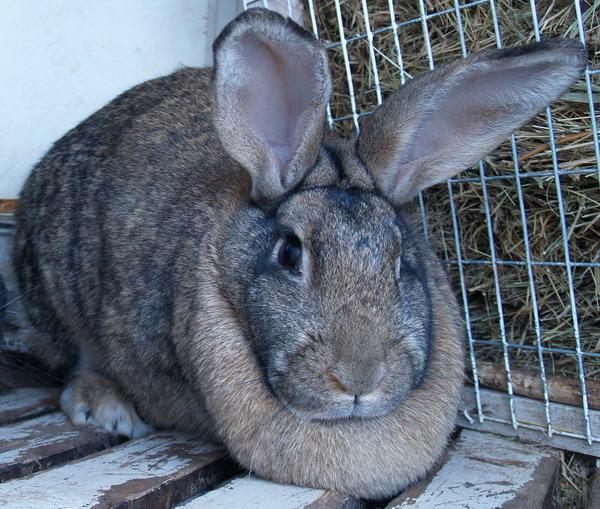
Other famous breeds include Alaska, Viennese black, silver, German sheep.
Interesting: the giant of the Flanders breed is the record holder in size and weight, the Ralph rabbit has grown up to a meter in length, weighs 22 kilograms.
The benefits of these rabbits
Farmers who raise giant rabbits note the following positive aspects of the breeds:
- large carcasses, meat yield - 55-60%;
- livable, non-aggressive character;
- high quality hides and meat;
- the rabbit gives up to 6 litters per year, fertility is high;
- females do not abandon the rabbits, feed everyone up to a month;
- early maturity - rabbits can be slaughtered at 3-4 months;
- grow well even in cold regions.
Rabbit breeders who grow ordinary breeds need to be prepared for the arrangement of special larger cages, to organize the space correctly.
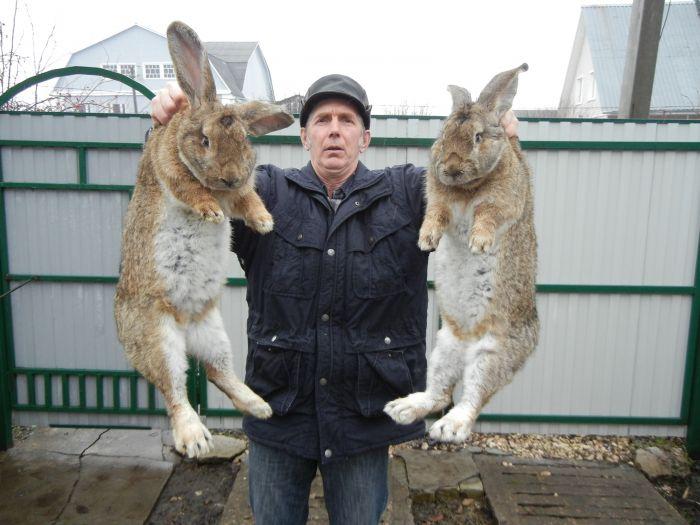
Features of maintenance and care
Giants are usually kept in individual cages, where the animal will feel free, will be able to climb on its hind legs. The recommended size is 100-120x80x60 centimeters. The house for the female mother is made larger - with an area of 120-170x100 centimeters.
Basic rules of care for growing giants:
- The cages are kept in a ventilated area, but free from drafts and direct sunlight.
- Rabbits of large breeds love to lie down, for exercise it is useful to send them to an open-air cage, where animals can run.
- The floor in the cage is covered with hay and sawdust. Cellular materials that are considered hygienic are not used. Due to the large weight, the rabbits injure the soft parts of the paws on the net.
- For the winter in cold regions, the barns are heated to avoid colds. Note that the giants also do not tolerate heat. Many breeds of giants adapted to Russia are kept in unheated sheds, it is necessary to protect animals from frostbite.
- The litter is regularly changed, the feeders and drinkers are washed, and the shed where the animals live is cleaned. Every six months, cells and equipment are disinfected (a solution of slaked lime, bleach). For infections, disinfect more often.
Vaccination of the livestock helps to rule out infectious diseases. From a month, young animals begin to be vaccinated.

What to feed the giant rabbits
Many breeds of giants tend to chew all the time and are therefore obese. This reduces sexual function. A balanced diet is selected and portions are dosed.
For feeding use:
- Since the beginning of spring, herbs are given - burdock, clover, plantain, nettle, alfalfa. The cut grass is left to lie down, fed dried up.
- Hay is given when there are no fresh herbs.
- Branches of trees.
- From grain - barley, oats.
- In winter, the animals are fortified with spruce and pine needles.
- Legumes are a source of protein for large breeds.
- Vegetables, fruits, melons and gourds - root crops, apples, mixed vegetables.
- Special compound feed, cake, bran.
To maintain health and strengthen immunity, especially in winter, vitamin supplements and bone meal are included in the diet. It is not recommended to feed the giants with wheat and products from it.
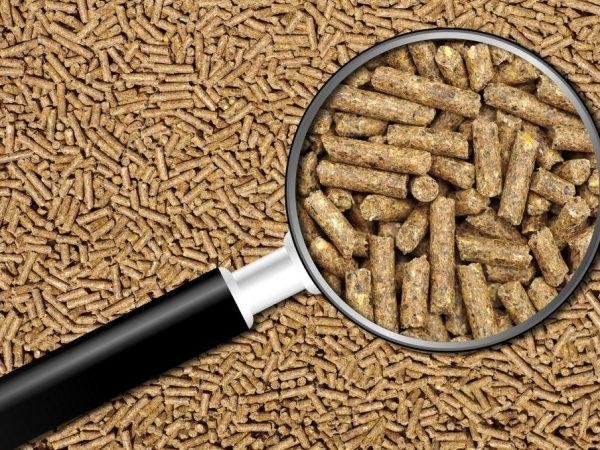
Rabbits are fed 2-3 times a day, preferably at the same time. This stabilizes digestion and helps to avoid gastrointestinal problems. Rotten, stale forage is not used. When feeding premixes and other finished products, the shelf life is taken into account.
In winter, they make sure that the water and juicy food do not freeze through, they are free of ice. Clean water should always be in the drinkers. Heavy rabbits often knock over light dishes, it is better to choose heavy feeders or fix them to the wall or floor.
Breeding technique
The sexual maturity of giants occurs somewhat later than that of small breeds. Rabbits are capable of mating at 6-7 months, but it is better to wait until the female is 8 months old, so that the animal reaches full condition. The rabbit, while waiting for the babies, equips the nest, she is transferred in advance to a cage of a larger area. The average litter rate is 7-8 rabbits, but sometimes 10-12 babies appear.
Females of giants do not eat children, despite their large dimensions, do not trample, treat young animals carefully. Up to 90% of the litter survive.
The birth weight of the rabbits is 80-95 grams, they grow quickly, at two weeks of age the most developed babies leave the nest. The rabbit feeds the babies for 30-45 days, then the young are transferred to separate cages. By 4 months, active growth ends, they become sexually mature by 7-8 months.
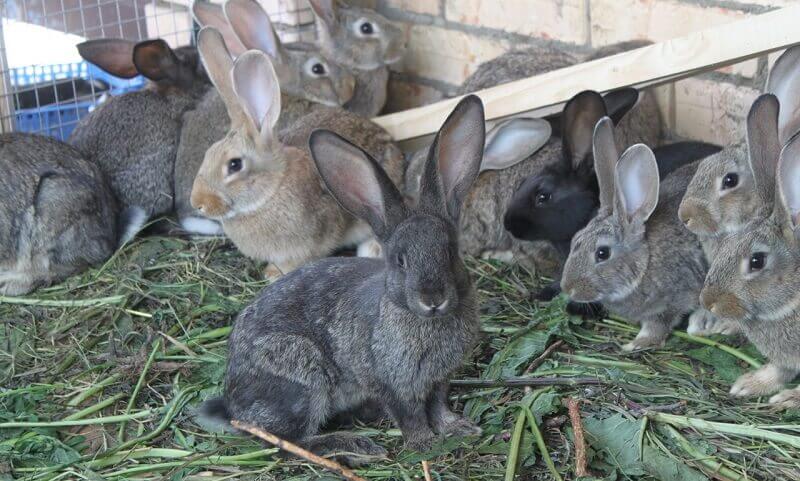
Giants live 6-8 years; decorative pets usually live up to this age. In farms, most of the livestock is slaughtered in 3-4 months, leaving only the producers.
Diseases and their treatment
Most breeds of giants have average indicators of immunity, they do not get sick more often than other types of rabbits.
Note: vaccinations, proper care and conditions of detention prevent the development of diseases.
The most common infectious and parasitic (contagious) diseases of giants include:
- myxomatosis - there is no treatment, rabbits are slaughtered, rooms and equipment are disinfected;
- spirochetosis, pasteurellosis - antibiotics;
- infectious rhinitis, stomatitis, mastitis - washing of mucous membranes and skin, antibiotics;
- helminthic infestations - removal of parasites in rabbits with special preparations, disinfection;
- ringworm - antifungal agents, ointments;
- fleas, scabies - antiparasitic treatment of rabbits.
Non-communicable diseases arise due to nutritional errors, injury. Rabbits catch cold in drafts, lack of heating in winter, due to damp cold litter. It is necessary to insulate the premises, include fresh vegetables in the diet, and fortify them.
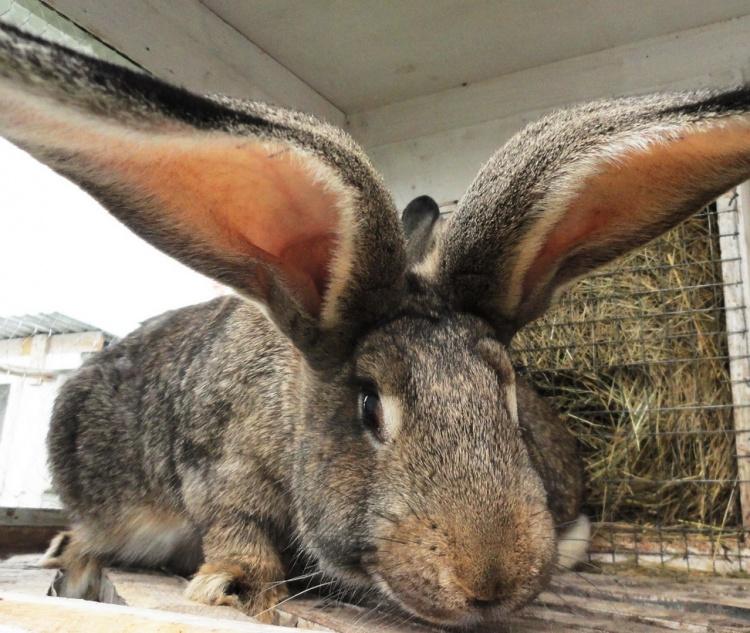
In case of constipation, diarrhea, colic, and other disorders of the gastrointestinal tract, the rabbits are transferred to high-quality food, carefully monitor the diet, and put them on a diet.
Choice and purchase
It is better to acquire giants from trusted breeders, in breeding farms. Otherwise, the rabbit may turn out to be an ordinary medium-sized eared furry. When choosing, take into account the characteristics of the breed - meat, fur, decorative. Most farmers prefer meat and fur varieties, which have high quality skin and meat. Rabbits from thoroughbred parents will cost more, but will demonstrate the best characteristics of the species.
After checking for compliance with the breed requirements, the rabbits are examined, taking into account the following parameters:
- smooth fur without bald spots and dumping;
- size and weight by age;
- mobility;
- condition of the upper teeth;
- healthy eyes, no mucus from the nose and drooling.
Check that the ears are clean and free of parasites. The new rabbits are quarantined prior to joining the herd.
Outstanding size, good-natured nature make the giants easy to breed. The meat of such animals is tasty and nutritious, the skins are larger than normal sizes.High productivity provides profit in rabbit farms, non-aggressive disposition and friendliness often turn giants into favorite pets.

